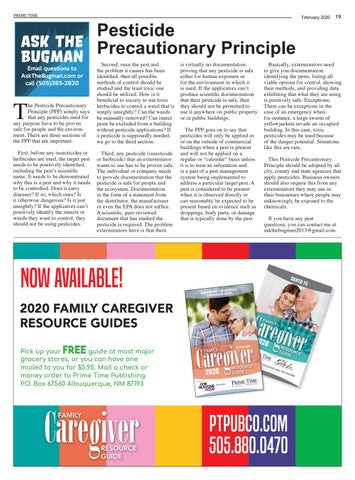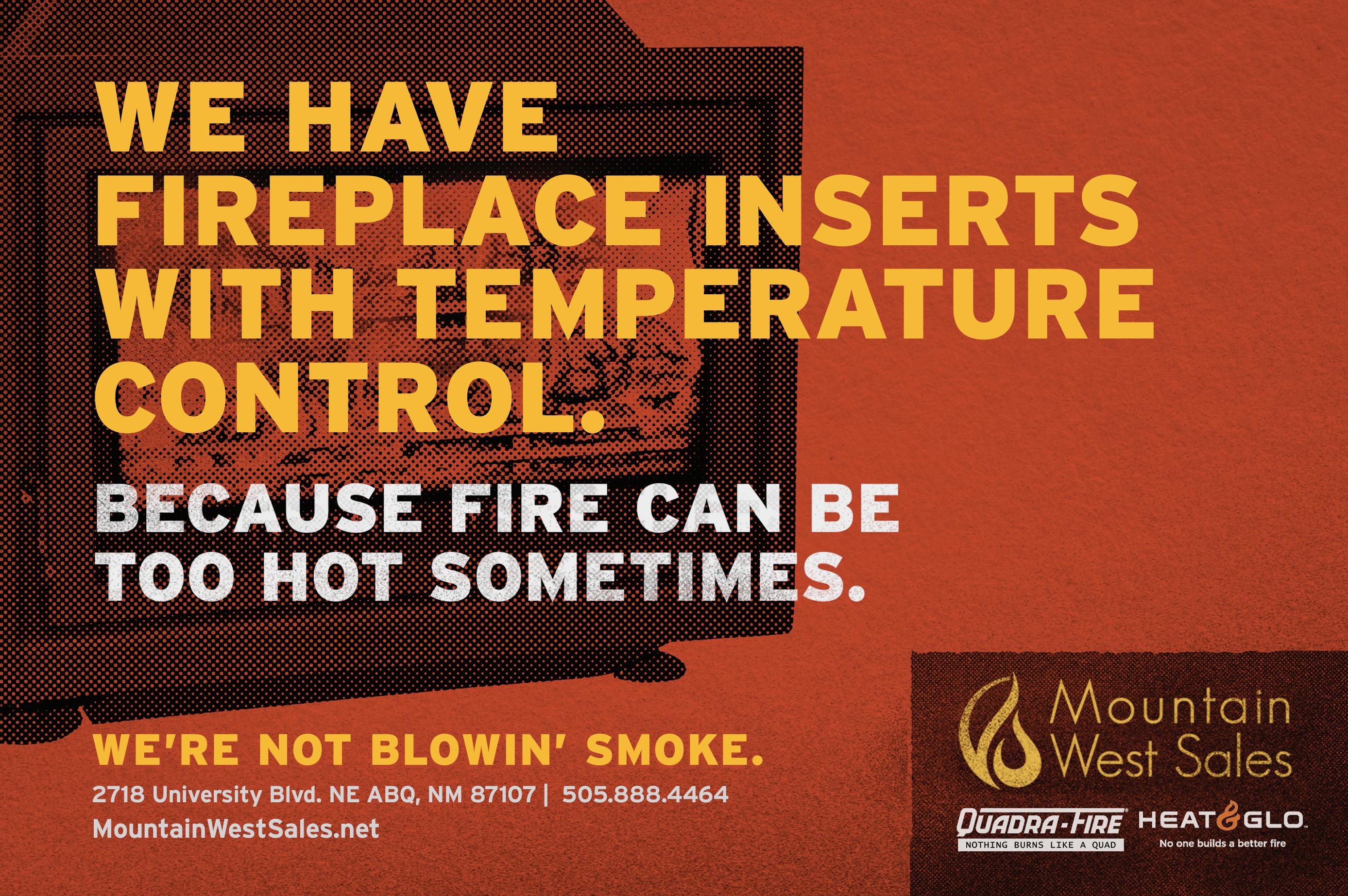PRIME TIME
Pesticide Ask The Precautionary Principle Bugman Email questions to AskTheBugman.com or call (505)385-2820
T
he Pesticide Precautionary Principle (PPP) simply says that any pesticides used for any purpose have to be proven safe for people and the environment. There are three sections of the PPP that are important. First, before any insecticides or herbicides are used, the target pest needs to be positively identified, including the pest’s scientific name. It needs to be demonstrated why this is a pest and why it needs to be controlled. Does it carry diseases? If so, which ones? Is it otherwise dangerous? Is it just unsightly? If the applicators can’t positively identify the insects or weeds they want to control, they should not be using pesticides.
Second, once the pest and the problem it causes has been identified, then all possible methods of control should be studied and the least toxic one should be utilized. How is it beneficial to society to use toxic herbicides to control a weed that is simply unsightly? Can the weeds be manually removed? Can insect pests be excluded from a building without pesticide applications? If a pesticide is supposedly needed, we go to the third section. Third, any pesticide (insecticide or herbicide) that an exterminator wants to use has to be proven safe. The individual or company needs to provide documentation that the pesticide is safe for people and the ecosystem. Documentation in the form of a statement from the distributor, the manufacturer or even the EPA does not suffice. A scientific, peer-reviewed document that has studied the pesticide is required. The problem exterminators have is that there
is virtually no documentation proving that any pesticide is safe either for human exposure or for the environment in which it is used. If the applicators can’t produce scientific documentation that their pesticide is safe, then they should not be permitted to use it anywhere on public property or in public buildings. The PPP goes on to say that pesticides will only be applied in or on the outside of commercial buildings when a pest is present and will not be applied on a regular or “calendar” basis unless it is to treat an infestation and is a part of a pest management system being implemented to address a particular target pest. A pest is considered to be present when it is observed directly or can reasonably be expected to be present based on evidence such as droppings, body parts, or damage that is typically done by the pest.
February 2020
19
Basically, exterminators need to give you documentation identifying the pests, listing all viable options for control, showing their methods, and providing data exhibiting that what they are using is positively safe. Exceptions: There can be exceptions in the case of an emergency when, for instance, a large swarm of yellowjackets invade an occupied building. In this case, toxic pesticides may be used because of the danger potential. Situations like this are rare. This Pesticide Precautionary Principle should be adopted by all city, county and state agencies that apply pesticides. Business owners should also require this from any exterminators they may use in their businesses where people may unknowingly be exposed to the chemicals. If you have any pest questions, you can contact me at askthebugman2013@gmail.com.
Now Available! 2020 FAMILY CAREGIVER RESOURCE GUIDES free
Pick up your guide at most major grocery stores, or you can have one mailed to you for $5.95. Mail a check or money order to Prime Time Publishing P.O. Box 67560 Albuquerque, NM 87193
PTPUBCO.com 505.880.0470










